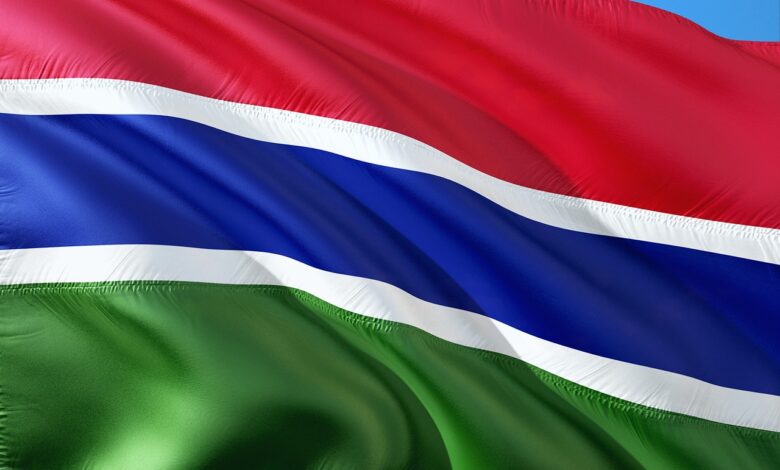Gambia Facts, History, Culture & Travel – Africa Facts Zone
A Compact Nation with a Rich Tapestry of Culture and History

The Gambia, known as “The Smiling Coast of Africa,” is a small but vibrant country in West Africa. Despite its size, Gambia boasts a rich cultural heritage, diverse ecosystems, and a history that intertwines with the broader West African narrative.
From its days as a critical hub in the transatlantic slave trade to its contemporary status as a peaceful nation known for its hospitality, Gambia offers a unique blend of tradition and modernity.
In this article, we’ll explore Gambia’s history, geography, culture, and economy, shedding light on the many facets that make this small nation a significant player in Africa.
Historical Background: From Empires to Independence
Early History and the Mali Empire
Gambia’s history dates back to ancient times when it was part of the larger Mali Empire, one of the most powerful and influential empires in West Africa.
The Mali Empire was known for its wealth, particularly in gold, and for its scholarly achievements, with Timbuktu as a centre of learning.
Gambia was a key region within this empire, strategically located along the Gambia River, which served as a major trade route.
Also Read: Djibouti Facts, History, Culture & Travel – Africa Facts Zone
The Transatlantic Slave Trade
Portuguese explorers arrived in the region in the 15th century, marking the beginning of European involvement in the Gambia.
The Gambia River became a focal point for the transatlantic slave trade, with thousands of Africans being captured and shipped to the Americas.
This dark chapter in Gambia’s history had a profound impact on the region’s demographics and culture.
Colonial Era
By the late 19th century, the Gambia had become a British colony, and the Gambia River largely defined its boundaries.
The British established Bathurst (now Banjul) as the capital, and the Gambia became known for its peanut (groundnut) production, which remains an important part of the economy today.
Independence and Post-Colonial Developments
Gambia gained independence from Britain on February 18, 1965, becoming one of the last British colonies in Africa to do so.
Dawda Jawara became the country’s first president, leading Gambia through its early years as a newly independent nation.
In 1994, Yahya Jammeh seized power in a coup and ruled until 2017, when he was ousted in a democratic election that brought Adama Barrow to power.
Geography: The Gambia River and Beyond
Location and Size
Gambia is the smallest country on mainland Africa. It is bordered by Senegal on three sides and the Atlantic Ocean to the west.
The country is shaped by the Gambia River, which flows from east to west, dividing the country into northern and southern halves. The Gambia covers an area of about 11,295 square kilometres (4,361 square miles), roughly the size of Jamaica.
Climate and Ecosystems
Gambia has a tropical climate with a distinct wet season from June to October and a dry season from November to May. The country’s ecosystems are diverse, ranging from mangrove swamps along the coast to savannas in the interior.
The Gambia River is home to a variety of wildlife, including hippos, crocodiles, and numerous bird species, making it a haven for ecotourism.
Cultural Heritage: A Melting Pot of Traditions
Ethnic Groups
Gambia is home to several ethnic groups, the largest of which is the Mandinka, followed by the Fula, Wolof, Jola, and Serahule.
Each group has its own language, traditions, and customs, contributing to the rich cultural fabric of the country. Despite this diversity, Gambians share a strong sense of national identity fostered by a history of peaceful coexistence.
Languages
English is the official language of Gambia, a legacy of its colonial past. However, many Gambians are multilingual, speaking their ethnic group’s language in addition to English. Mandinka, Wolof, and Fula are the most widely spoken languages in the country.
Religion
Islam is the predominant religion in Gambia, with about 95% of the population identifying as Muslim. Christianity and traditional African religions are also practised, with religious tolerance being a hallmark of Gambian society.
Music and Dance
Gambian music is deeply rooted in the country’s cultural traditions. The kora, a 21-stringed lute-bridge-harp, is the most iconic instrument in Gambian music. Griots or traditional storytellers often use it to recount history and pass on cultural knowledge.
Dance is also an integral part of Gambian culture, with each ethnic group having its own distinctive styles and rhythms.
Also Read: Unveiling the Wonders of Egypt Facts, History, Culture & Travel – Africa Facts Zone
Economy: Agriculture, Tourism, and Beyond
Agriculture
Agriculture is the backbone of Gambia’s economy, employing about 75% of the population. Peanuts are the main cash crop, but other crops such as millet, sorghum, and rice are also cultivated. Livestock farming and fishing are important sources of livelihood for many Gambians, particularly in rural areas.
Tourism
Tourism is a vital sector in Gambia’s economy, contributing significantly to GDP and employment. The country’s beaches, wildlife, and cultural heritage attract visitors from around the world.
Ecotourism, in particular, is growing, with initiatives aimed at preserving the environment while providing economic opportunities for local communities.
Challenges and Opportunities
Gambia faces several economic challenges, including limited industrialization, dependence on agriculture, and vulnerability to external shocks such as fluctuations in global peanut prices.
However, the government is working to diversify the economy by promoting tourism, expanding the services sector, and encouraging foreign investment.
Conclusion
Although the Gambia is small in size, it is rich in culture, history, and natural beauty. From its ancient ties to the Mali Empire to its role in the transatlantic slave trade and its modern-day efforts to build a stable and prosperous nation, Gambia offers a fascinating glimpse into the complexities of West African history and society.
As the country continues to navigate the challenges of the 21st century, it remains a testament to the resilience and adaptability of its people.
Frequently Asked Questions (FAQs)
1. What is the significance of the Gambia River?
The Gambia River is central to the country’s geography, culture, and economy. It serves as a major transportation route and is home to diverse wildlife, making it a focal point for ecotourism.
2. When did the Gambia gain independence?
Gambia gained independence from Britain on February 18, 1965.
3. What are the main languages spoken in the Gambia?
English is the official language, but many Gambians also speak local languages such as Mandinka, Wolof, and Fula.
4. What is the role of tourism in Gambia’s economy?
Tourism is a key sector in Gambia’s economy, contributing significantly to GDP and providing employment for many Gambians. The country’s beaches, wildlife, and cultural heritage are major attractions.
5. How does agriculture contribute to the Gambia’s economy?
Agriculture is the mainstay of Gambia’s economy, with peanuts being the primary cash crop. The sector employs about 75% of the population.
6. What is the cultural significance of the kora in the Gambian music?
The kora is a traditional stringed instrument played by griots, who are cultural historians and storytellers. It is central to Gambian music and is used to recount history and traditions.
7. How is the Gambia addressing economic challenges?
The government is working to diversify the economy by promoting tourism, expanding the services sector, and encouraging foreign investment to reduce dependence on agriculture and increase resilience to external shocks.





